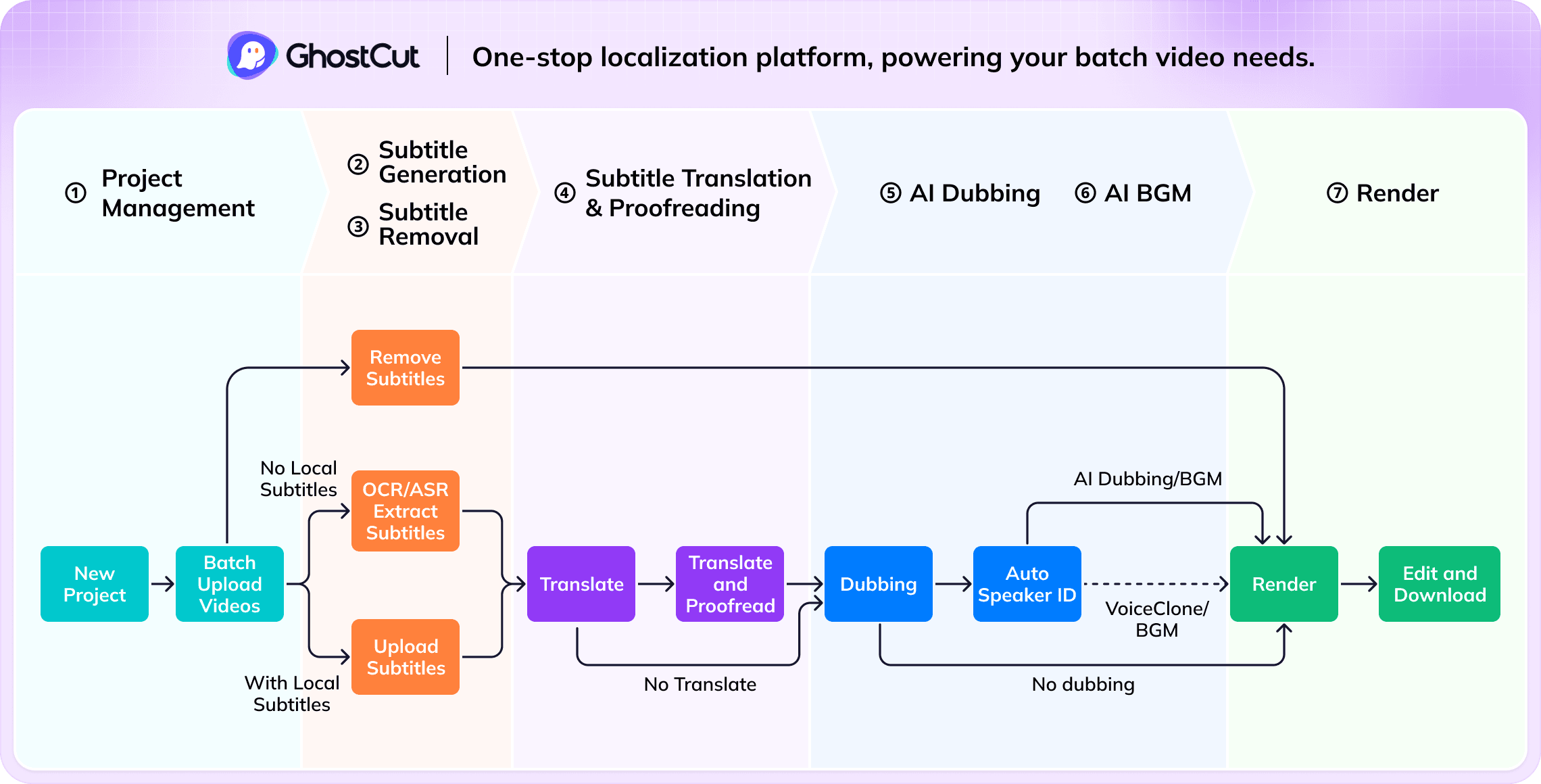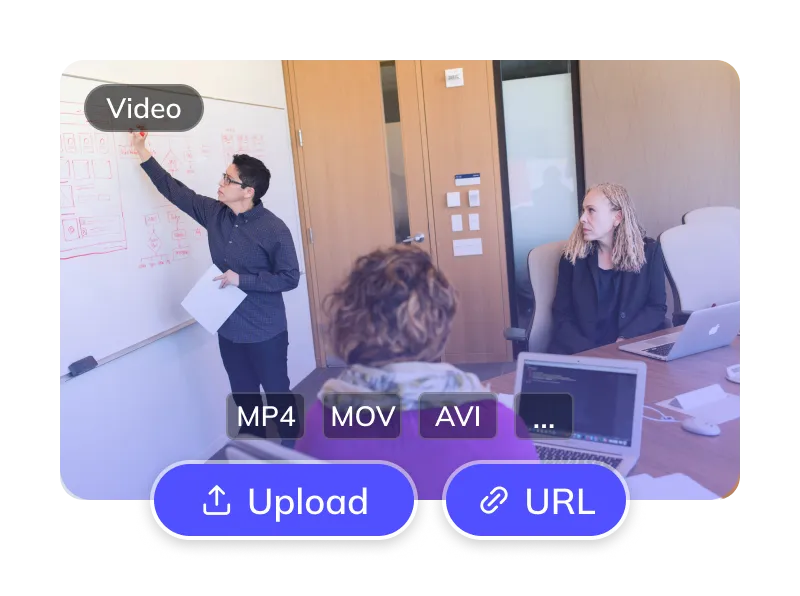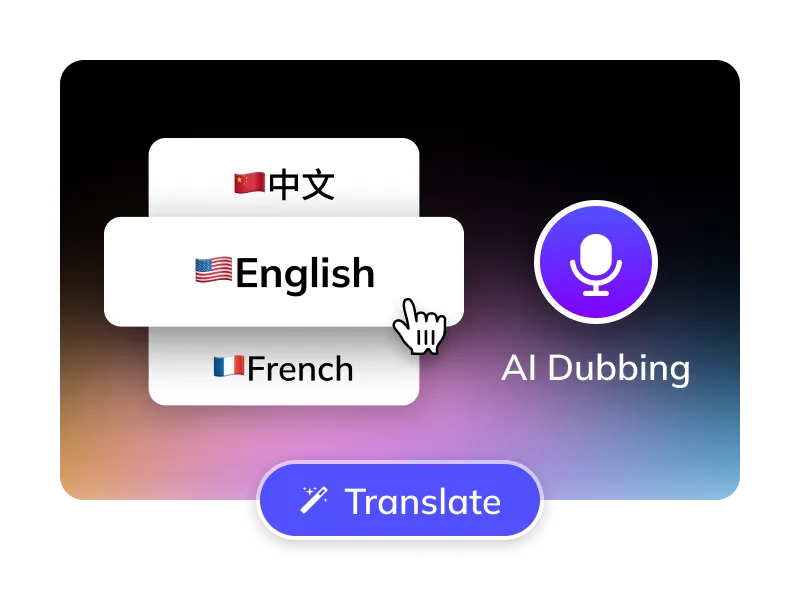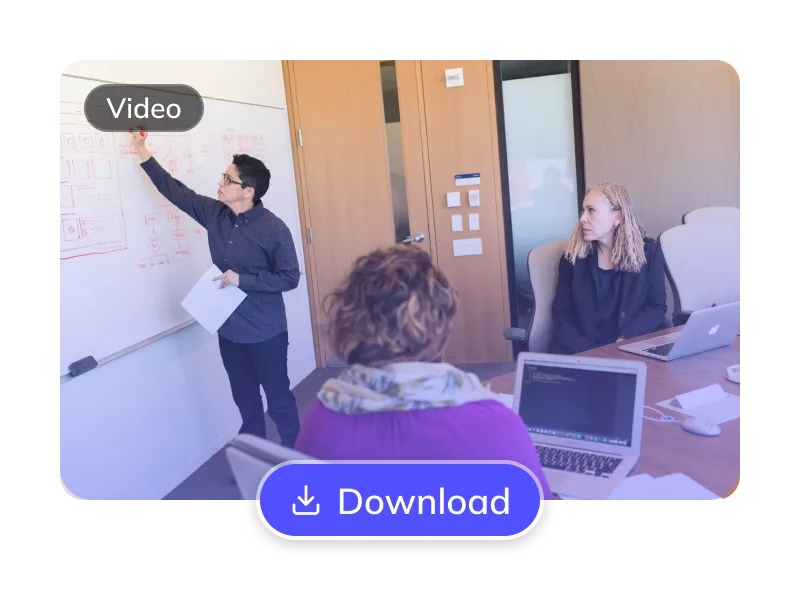How to Translate Korean Videos to English ?
Translate Korean Videos to Thai in 3 Easy Steps
Trusted by 1,500,000+ Global Creators and Businesses
Why GhostCut for Your Video Translations?
GhostCut is your all-in-one AI solution for translating Korean content into natural, engaging Thai.
Effortless Project Management
Manage Korean assets, subtitles, & Thai videos. Batch process projects efficiently.
Pinpoint Thai Accuracy
Up to 99.5% accurate. Optimized for Korean-to-Thai with LLM calibration & multi-agent review for culturally fluent Thai translations.
Lifelike Thai AI Dubbing
Choose from diverse, human-like Thai AI voices (US/UK accents). Emotion-cloning technology captures original tone for natural Thai delivery.
Flexible Korean Subtitle Options
Optionally erase original Korean hardsubs for a clean slate. Translate embedded Korean subtitles directly.
Smart Multi-Speaker ID (Korean)
AI detects multiple speakers in Korean videos. Assign or clone distinct Thai voices per character, with cross-episode consistency for complex Thai dubs (dramas, interviews).
Efficient Batch Processing & API
Batch translate and dub 100s of Korean videos to Thai at once. Seamlessly integrate with our robust API.
Versatile BGM Control
Keep or mute original BGM. Our unique tech can also isolate sound effects, meeting diverse copyright and distribution needs.
Unbeatable Value
Flexible Korean-to-Thai plans. Try core features free. Automated pro service from just $0.1/minute.
Easy Online Access
No downloads. Instantly translate Korean videos to Thai online. Works on Windows, Mac, & major mobile browsers for cloud processing anywhere.
The GhostCut Edge: Unmatched Accuracy, Speed, and Value.
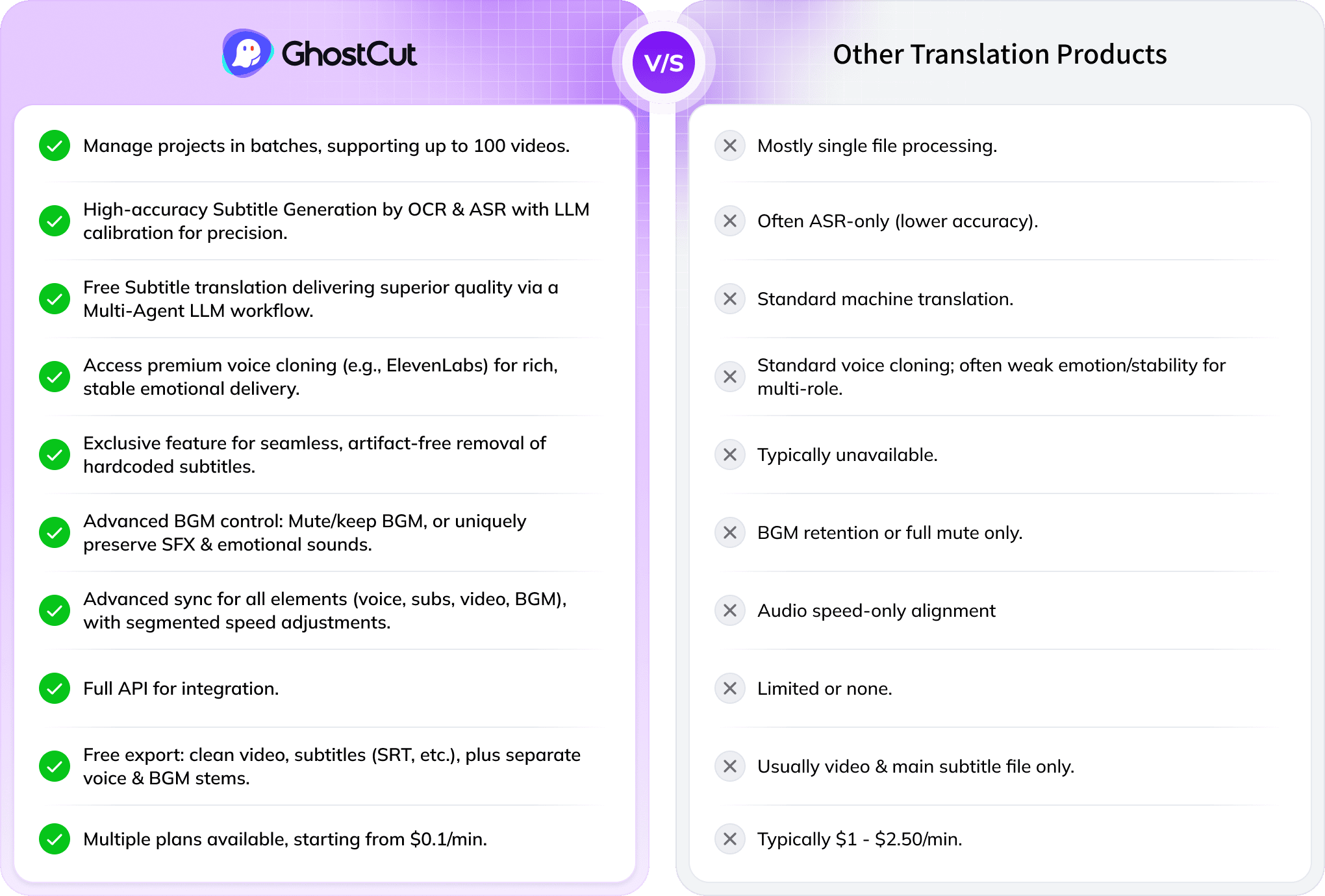
Every Algorithmic Optimization, Engineered for Quality Thai Video
Mastering Long-Form Korean Drama & Multi-Character Dubbing
Translating a 100-minute Korean drama with 4000+ lines and many characters into Thai is tough. Standard AI struggles to tell speakers apart, causing errors. GhostCut’s multi-modal AI (video, voice, text) excels in long-form, multi-speaker content, ensuring accurate, consistent character voices across entire series.
Translate Now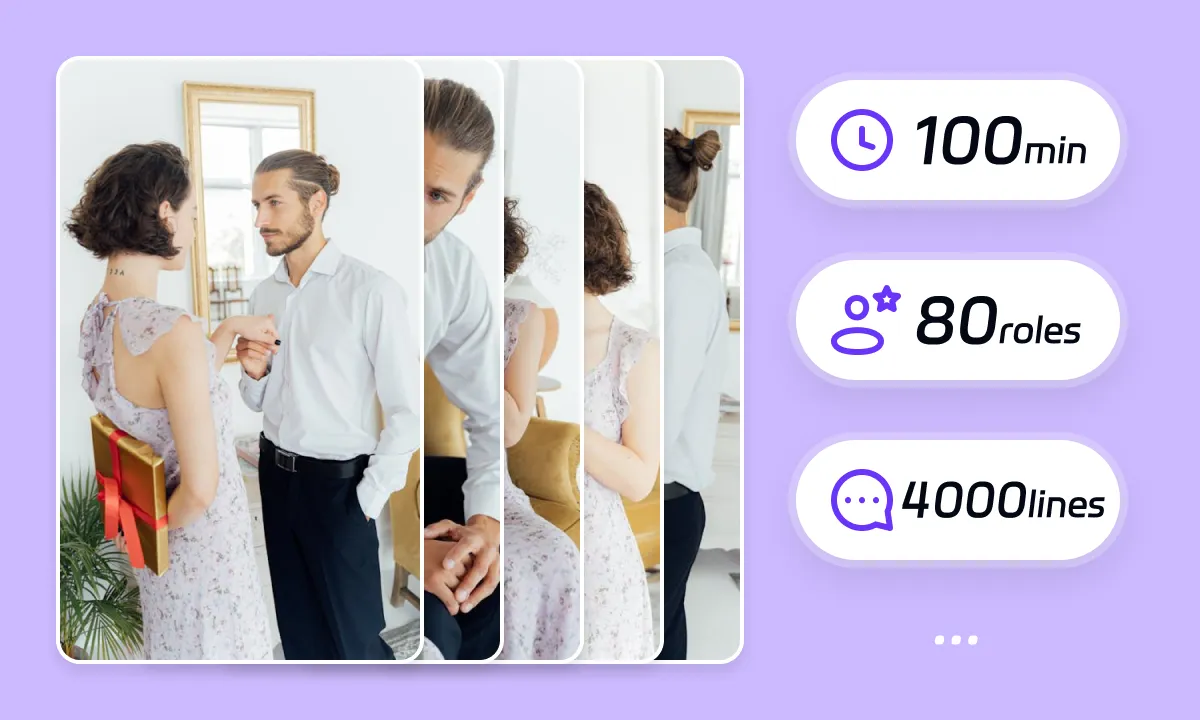
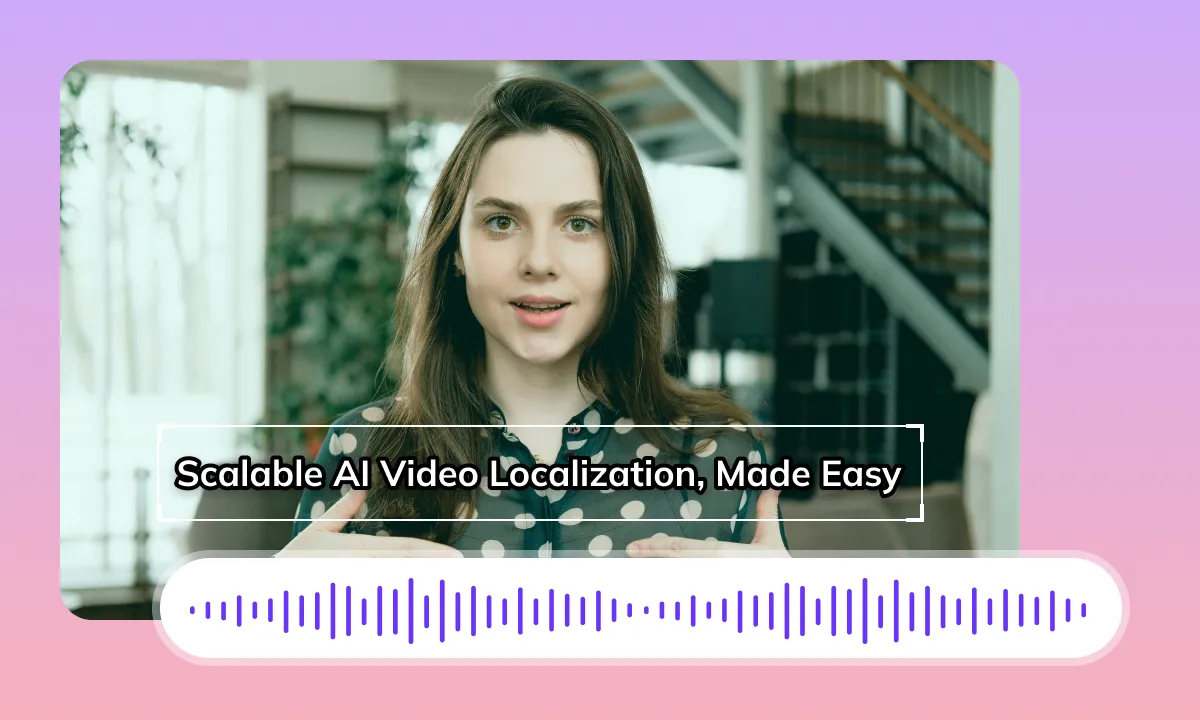
Seamless Thai Dubbing & Perfect Lip-Sync
GhostCut ensures natural Thai audio flow by treating related subtitles as whole ideas for TTS. It then precisely times new Thai subtitles. Since Korean-to-Thai translation can change speech length, our AI expertly adjusts the new Thai audio, subtitles, video, and BGM to maintain perfect sync, just like a seasoned editor.
Translate NowBoost ROI with Flawless Korean Subtitle Removal
Original Korean hardsubs can limit your video's global appeal. GhostCut’s AI doesn't just blur; it intelligently reconstructs the background obscured by Korean subtitles, even complex ones, for a perfectly clean, high-quality visual. This means better viewer engagement, longer watch times, and higher ROI.
Translate Now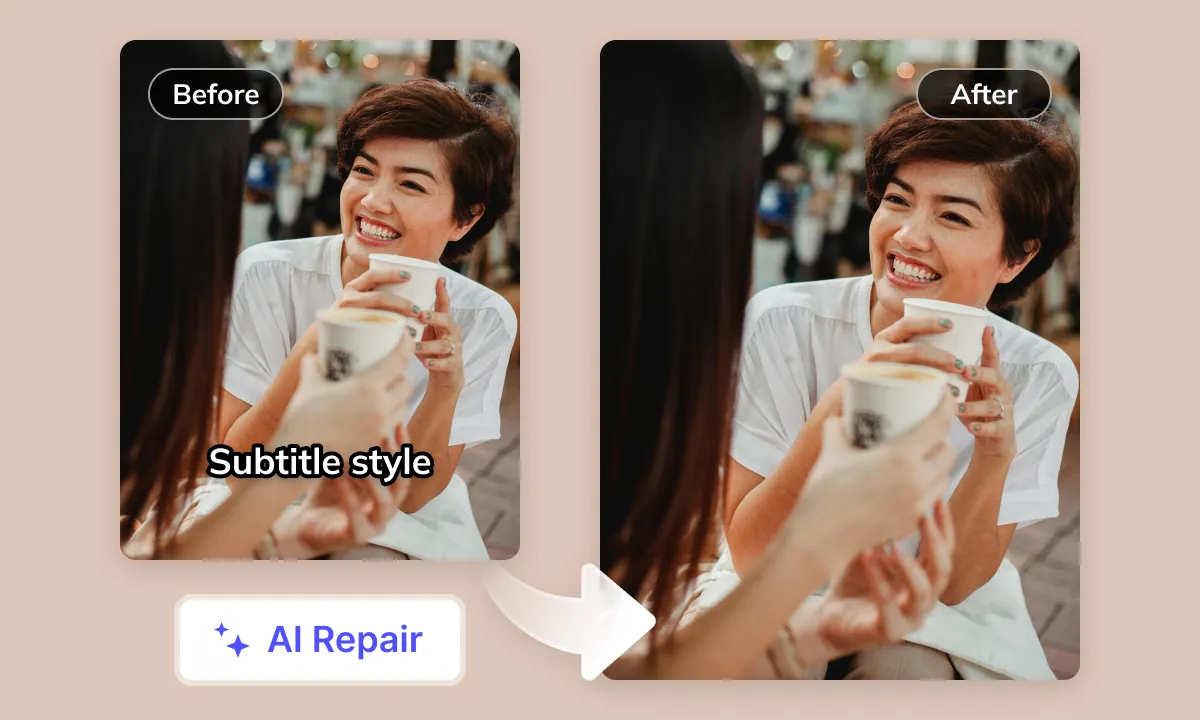
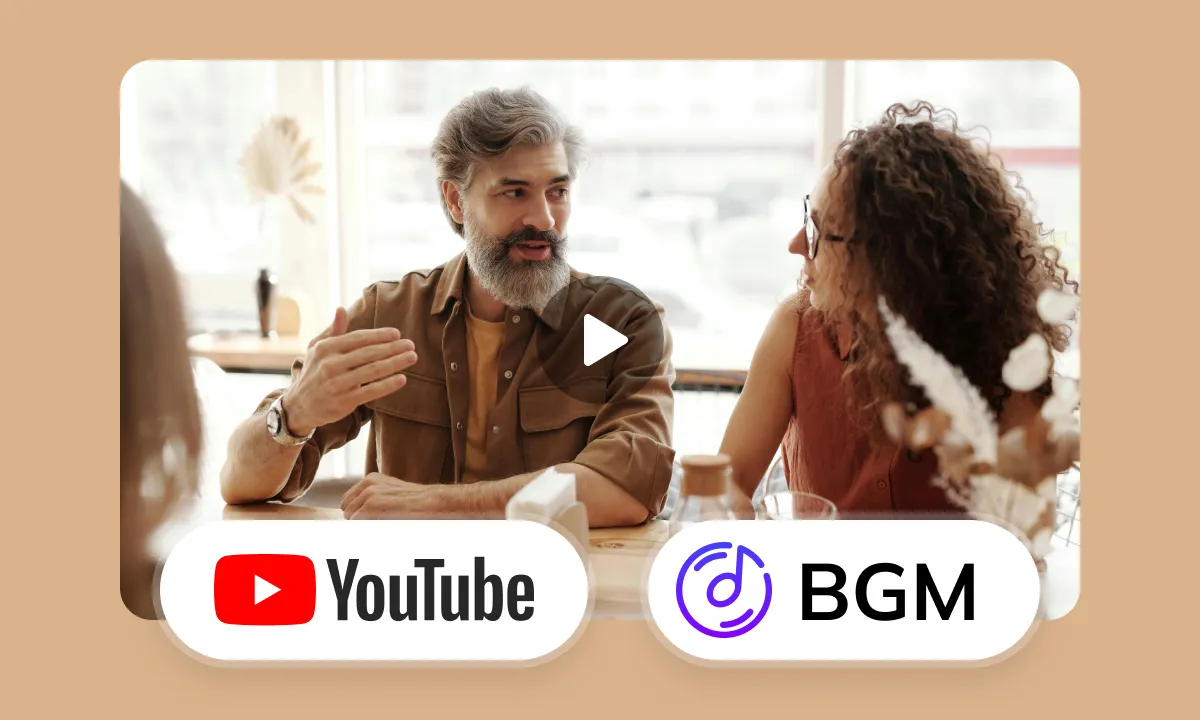
Smart Audio Control for YouTube Creators
Navigating BGM copyright on YouTube is tricky. GhostCut’s advanced audio separation isolates Korean dialogue for translation, while intelligently managing BGM, sound effects, and even emotional expressions. Our "Keep SFX, Remove Music" option is a creator favorite for avoiding copyright issues without losing your video’s impact.
Translate NowFocusing on the Thai Market: Overcoming Korean Content Export Challenges
Korean cultural products, such as popular dramas, K-Pop videos, and vlogs, are hugely popular globally. However, in key Southeast Asian markets like Thailand, language barriers challenge content distribution. High-quality Korean videos on platforms like YouTube or TikTok often lack accurate Thai translation and dubbing. This makes it hard for local viewers to understand and fully engage. This issue reduces engagement and limits the content's local penetration and commercial value in Thailand. Therefore, there's growing demand for professional, efficient AI Korean-to-Thai video translation and dubbing
Korean Video Translation to Thai: Insights and Challenges
Embedded Hard Subtitles and Original Audio Interference
If Korean videos contain embedded hard subtitles that cannot be removed, or if the original Korean audio is retained, it will directly conflict with subsequently added Thai subtitles or dubbing. This significantly impairs the immersive viewing experience and information retention efficiency for Thai audiences
Bridging Linguistic Structures and Cultural Gaps
Korean and Thai differ significantly in vocabulary, grammatical structures (e.g., word order, honorifics, particle usage), and cultural expressions. The rich nuances, specific cultural references, and slang in Korean require profound bilingual and bicultural understanding when translated into Thai. Literal translation can easily sound unnatural or lead to misunderstandings; accurately conveying the original meaning and emotion is a core challenge
Thai Subtitle Formatting Challenges
Korean Hangul has a compact structure, whereas Thai script includes complex tone marks, vowels, and consonant clusters, leading to different visual presentations on screen. When translating Korean content into Thai subtitles, meticulous formatting is required, considering Thai script characteristics. This includes carefully controlling characters per line, line breaks, and display timing to ensure subtitles are clear, comfortable to read, and do not obstruct the visual content
Matching Differences in Pacing and Rhythm
Korean and Thai may have different natural speaking speeds and information densities when conveying the same content. During Thai dubbing, a technical challenge arises in precisely matching the duration of the translated Thai audio with the original Korean dialogue, while also aligning with on-screen actions and character emotional rhythms to achieve natural audio-visual synchronization
Korean Speech Recognition Accuracy Issues
In complex audio environments, such as regional Korean accents, overlapping speech from multiple characters, or background noise, the accuracy of Korean AI speech recognition is significantly impacted. This directly affects the foundational quality of subsequent translation and dubbing
Scarcity of High-Quality Thai AI Voices
While Thai AI voice technology is advancing, high-quality AI voices that are natural, emotive, tonally rich, and suitable for diverse age groups, genders, and character dubbing requirements remain relatively scarce. Many existing AI voices can still sound mechanical or unnatural, failing to meet the expressive demands of video dubbing
High Difficulty of Lip Synchronization
Korean and Thai have significant differences in pronunciation methods, as well as mouth and lip movements. This makes precisely aligning Thai dubbing with the lip movements of characters in the original Korean video an extremely challenging task, requiring highly complex algorithms and extensive fine-tuning
Standards for Top-tier AI Translation Systems
An ideal AI system for translating Korean videos into Thai should seamlessly integrate: precise Korean source language recognition, natural Thai translation that fully understands and adapts cultural and contextual nuances, emotionally rich Thai AI dubbing that aligns well with visuals, and intelligent audio-visual timeline alignment and post-processing capabilities
Tackling Video Translation Challenges with AI Empowering your Korean content for any worldwide scenario.
Your All-in-One AI Translation Studio
GhostCut offers more than just Korean-to-Thai translation. It's a complete AI-powered workflow: subtitle extraction 、 removal 、 translation and proofreading to multi-character dubbing , BGM processing, and final rendering. Go from Korean source to global-ready videos, effortlessly.
